
How to Use Life360 on Windows PC For Oppo A1x 5G? | Dr.fone

How to Use Life360 on Windows PC For Oppo A1x 5G?
Life360 is an online platform that utilizes geo-location services to help users share their real-time location with friends and family. The app allows people to create a family group and stay connected to each other through features like chatting, sharing location, sending safety alerts, etc.
As of now, you cannot run Life360 on computer as it is only available for Android and iOS. Why? Because as opposed to a PC, one can easily carry their device everywhere! It means whether your kid is stuck in traffic and needs your help or your parents have lost their way back home, Life360 will instantly send you an alert on your device.
However, that doesn’t mean you cannot use Life360 on a PC. While it may seem a bit odd, there are a couple of methods that’ll allow you to get the Life360 app for Windows. In today’s guide, we are going to share some of these methods that’ll help you run the Life360 app on Windows.
So, without wasting another second, let’s dive straight into the guide.
Part 1: Why people seek to use Life360 on PC?
First things first; why would anyone want to use a family locator app like Life360 on their PC? Well, the truth is everyone has their own reason to get Life360 for PC. For instance, let’s say you are in the middle of an important project and don’t want to be bothered by alerts on your smartphone. However, you still don’t want to compromise with the safety of your family members.
In this situation, you can simply run the Life360 app on PC. This will allow you to directly keep track of the whereabouts of family members on your Windows system and you won’t have to constantly check your phone.
Life360 can also be used on a computer when your phone’s battery has completely drained and there’s no power outlet nearby. In this case, you can simply power-on your laptop, start the Life360 app and send your current whereabouts to family members.
Part 2: Is it possible to use Life360 on Windows PC?
Life360 is an extremely useful app for people who are always concerned about their closed ones. The app is basically designed with a vision to keep family members connected and safe. In addition to location sharing, the app also provides exclusive features like crash detection, place alerts, speed alerts, battery monitoring, etc.
The app also makes it easier for parents to monitor their child’s movement. Using the app, you can always know that your kids have safely reached school and back home. For any parent, knowing whether the kids are safe, is one less thing to worry about.
However, as we mentioned earlier, Life360 hasn’t been released for Windows yet. So, there’s no direct way to install and run the app on a Windows PC. While Life360 may release a dedicated Windows software in the future, as of now, you can only run it using the alternative methods.
These methods include:
Part 3: Use Life360 on Windows PC with Android emulator
The first and the most convenient way to run Life360 on computer is to use an Android Emulator. An emulator is basically a software that creates a virtual Android system on your computer. As a result, you’ll be able to run Android apps on your computer.
While there are dozens of Android emulators, Bluestacks seems to be the most popular and user-friendly option among all. Unlike other emulators, Bluestacks is easy to set up and use.
Here’s how you can run Life360 on a computer using Bluestacks Android emulator./
Step 1: Head over to Bluestacks official website and tap the download button.
Step 2: Open the installer and tap the “download” button. This will initiate the download process on your System.
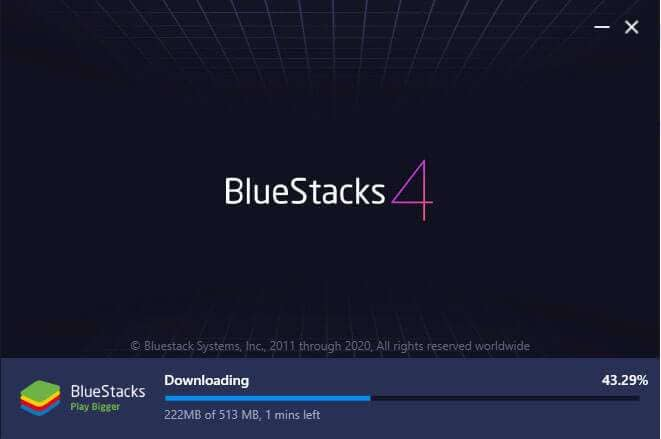
Step 3: Once the installation process completes, Bluestacks will start to boot. Keep in mind that the first boot may take some time, depending on your system configurations.

Step 4: In the home screen, tap the “Google Play Store” icon. You’ll be asked to sign-in with your Google account. Enter the right credentials and log-in to the Google Play Store.

Step 5: In the top search bar, type-in Life360 and tap the “install” button to download the app.

Step 6: Life360 is now installed on your computer. Open the app and enter your login details. You’ll now be able to run Life360 on your PC.

Part 4: Use Life360 by mirroring Android to Windows PC
While running an emulator is a great way to get Life360 on PC, it has its own set of challenges. For instance, running an Android emulator is not easy when you have a low-configuration PC. Emulators like Bluestacks requires high system configuration otherwise they take forever to load.
In this situation, we have another alternative for you to run Life360 on PC. You can simply mirror your Android to your Windows system. Mirroring the Android device will allow you to see its content on the PC itself.
Here’s how you can mirror the Android device on your PC.
Step 1: Make sure that Bluetooth is activated on both devices.
Step 2: On your Windows PC, open “Settings” and select the “Systems” tab.

Step 3: Choose the “Projecting to this PC” option in the left menu-bar and make sure that “Available Everywhere” is selected.

Step 4: If you’re running Android Pie or above on your device, scroll down to open notification drawer and select “Smart View” (or “Cast” in some devices). You’ll see your PC listed here. Tap the button to start Android mirroring.

Step 5: It may take some while for the connection to establish. Once it does, you’ll be able to cast your device screen onto your computer and you’ll be able to run life360 on your system.

Keep in mind that you’ll still require your device to navigate through the content on your computer. Any action that you perform on your device will be replicated on your computer screen as well.
Final Verdict
Life360 is probably among the top family locators for Android users. Apart from its extensive range of features, the app provides a user-friendly interface, which allows it easier for even elders to use the app without any issues. Even though there isn’t a dedicated Life360 software for Windows, you can follow the above-mentioned methods to run the Life360 on PC.
You Might Also Like
Location-based apps
GPS spoof for dating apps
GPS spoof for social apps
Pokemon Go on PC
AR game tricks

Change Phone GPS Location Easily
- ● Teleport GPS location to anywhere
- ● Play AR games without moving
- ● Spoof Location on the popular Apps
The Best 8 VPN Hardware Devices Reviewed On Oppo A1x 5G
In today’s world, it is highly recommended to use a VPN while using the internet. Although it helps us access geo-restricted content, it can also strengthen our security. Besides using a VPN software, you can also use a VPN hardware as well. For instance, a hardware VPN for home use can be connected to your network and let all the Oppo A1x 5G devices enjoy its benefit. To help you pick an ideal hardware VPN, we have come up with this guide. In this post, we have compared various Amazon hardware VPN options and have handpicked the top 8 of them for you.
If you want to use a hardware VPN for your home or business needs, then you can certainly meet your requirements with these options.
1. Cisco Systems Gigabit Dual WAN VPN
If you have already used Cisco products in the past, then you won’t face any trouble using this Amazon hardware VPN as well. It provides a wired connection with its 14 different LAN ports.
- Load balancing is supported by its dual gigabit Ethernet WAN ports
- Has an inbuilt SSL (Secure Socket Layer) and SPI (Stateful Packet Inspection) firewall.
- It is quite easy to perform its setup, as it comes with an intuitive GUI setup wizard.
- You can analyze employee productivity as it can manage different users at once.
- It is an advanced IP Security VPN hardware.
- The data transfer rate is 100 Mbps
- Warranty: 90 days
Price: $172

2. Zyxel Next Generation VPN Firewall
This VPN hardware by Zyxel will help you meet your business needs for sure. It is one of the most secure devices that you can try to get an access to around 100 VPNs.
- The hardware VPN supports up to 60 thousand sessions at the same time
- Provides an SHA-3 encryption
- It supports a speed of 300 Mbps VPN and 1 Gbps firewall
- Provides a dual-WAN fallback and failover support
- Besides IPSec, it includes SSL tunnels as well (IPv6 is also supported)
- Layer 2 Tunneling Protocol for mobiles (Android, iOS, and Windows phones)
- Warranty: 2 years
Price: $450 (for 100 VPNs), $950 (for 300 VPNs), and $1350 (for 1000 VPNs)

3. GL.iNet GL-AR150 Mini Travel Router & VPN
If you are looking for an affordable hardware VPN for home use, then you should check this portable VPN router by GL.iNet. Since it is lightweight and portable, you can carry it anywhere and use it as per your needs.
- It has an inbuilt OpenVPN and TOR client.
- This mini router provides an access to over 20 different VPN services.
- You can either use its adapter or any laptop/power bank to use it.
- Weight: 1.41 oz
- Dual Ethernet ports
- 64 MB RAM and 16 MB flash ROM
Price: $22
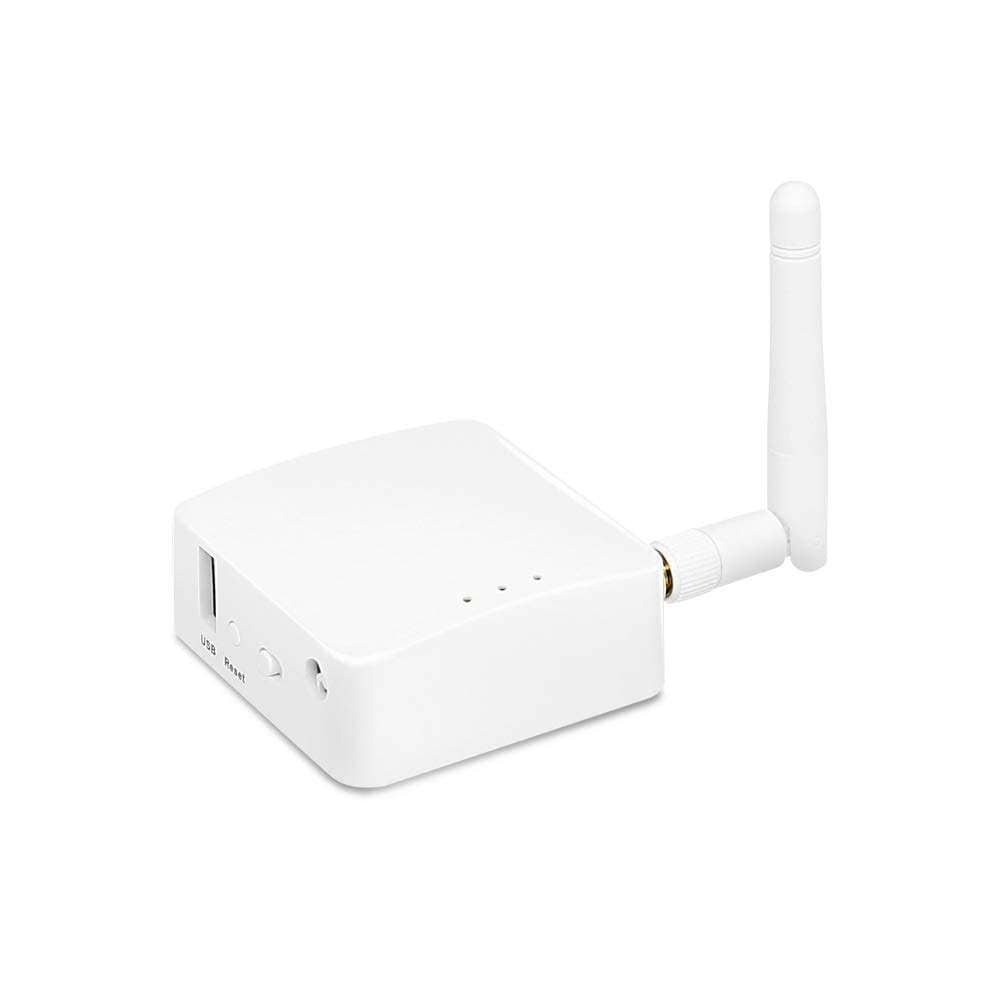
4. UTT HiPER 518 VPN
It doesn’t matter if you like to use VPN for your home network or small business, this Amazon hardware VPN will come handy to you on numerous occasions. It comes with a quick setup wizard as well to assist you.
- The hardware VPN supports real-time backup
- Inbuilt load balancing feature
- Several advanced features like native firewall, access control, IP binding, NAT, and more
- 5 VPN tunnels can be used
- Has an auto negotiation and auto MDIX property
- It has 2 10/100M WAN ports and 10/100 LAN ports
- Ethernet connectivity with 100 Mbps data transfer rate
- Warranty: 1 year
Price: $40

5. Dell Sonicwall TZ300 VPN
Another secure Amazon hardware VPN that you can try is from the house of Dell. Even though it is a high-performance router, you might need to walk an extra mile to setup its VPN compared to other products.
- The VPN hardware is optimized for Windows, Mac, and Android users
- It has an inbuilt SSL encryption.
- Comes with an anti-virus, anti-spyware, and intrusion prevention technology
- Supports IPSec and USB connectivity
Price: $554

6. Linksys Business Dual WAN VPN Router
This hardware VPN router by Linksys is majorly designed for small and medium-sized offices. This site-to-site VPN supports Ethernet connectivity and has a remarkable data transfer rate of 1000 Mbps.
- It provides 110 Mbps IPSec and 900 Mbps firewall
- There are 5 OpenVPN tunnels dedicated to iOS and Android devices
- Besides that, it has 50 site-to-site IPSec tunnels
- Inbuilt features like WAN failover and load balancing
Price: $165
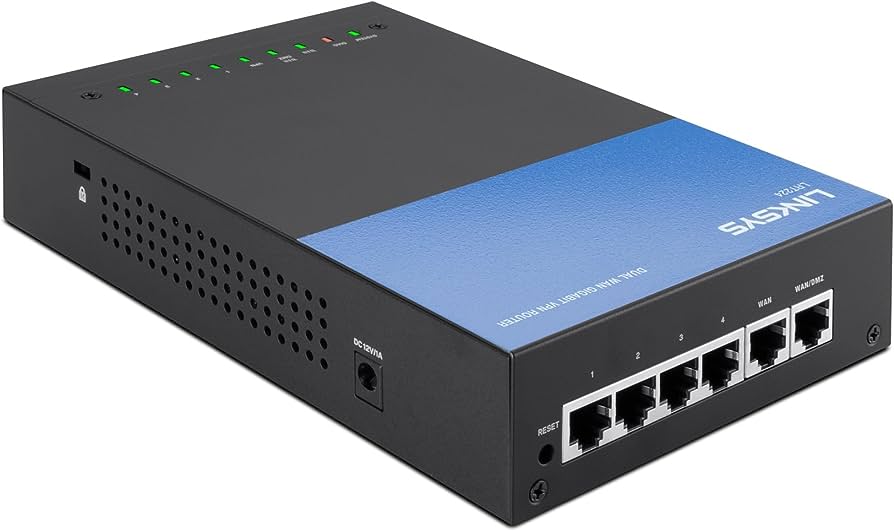
7. D-link 8-port Gigabit VPN Router
This router by D-link is an ideal pick for hardware VPN for home use and small offices. It supports Green Ethernet to optimize its power needs as well.
- VPN tunnel integration – 25 IPSec and 25 PPTP/L2TP tunnels
- It has 8 LAN (Gigabit) ports and 1 WAN (Gigabit) port
- Additionally, it has 5 SSL tunnels and 10 GRE tunnels
- Easy to configure, the VPN firewall comes with its GUI interface
- Administrations can also block websites with its dynamic web content filtering feature
- Limited lifetime warranty
Price: $130
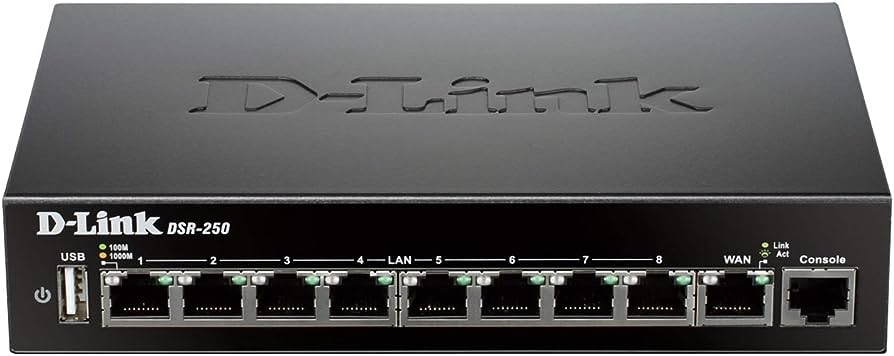
8. TP-Link SafeStream VPN Router
This Amazon hardware VPN by TP-Link is one of the most popular Gigabit VPN routers out there. It comes in numerous versions as well and can be upgraded as per your requirements for a hardware VPN for home use.
- Supports 20 IPSec and 16 PPTP VPN tunnels
- Also has 4 Gigabit LAN and 1 Gigabit WAN port for high connectivity
- Advanced encryption techniques including AES128, AES192, AES256, DES, and 3DES with MD5 and SHA1 Authentication
- Also provides Manual and IKE Key Management
- DoS defense protection (with SPI firewall)
- Warranty: 1 year
Price: $57

Alternative: Set Up VPN on Common Hardware Devices
With any of the above VPN hardware devices, you can set up reliable VPN services in your home or office.
But many of them come with a high price, and may prove to be expensive for some individual users.
So, for a common PC, phone, router, Android TV, etc., how to set up VPN in a more affordable manner?
Many users choose NordVPN to do it for the following reasons:
- Supports 6 devices at the same time.
- VPN service can be set up on Windows, Mac, Android, iOS, Linux, and a wide range of routers.
- 24 / 7 customer service available.
- VPN service provider for large companies like CNN and BuzzFeed.
- As low as roughly 3 USD per month.
Now when you know about the various options for hardware VPN for home use and business purposes, you can easily pick a VPN hardware of your choice. We have listed different kinds of options in this post, helping you make up your mind. You can always visit their Amazon page and get more information about them. Go ahead and pick the hardware VPN of your choice and let us know about it as well.
Dr.Fone - Virtual Location
1-Click Location Changer for both iOS and Android
- Teleport from one location to another across the world from the comfort of your home.
- With just a few selections on your computer, you can make members of your circle believe you’re anywhere you want.
- Stimulate and imitate movement and set the speed and stops you take along the way.
- Compatible with both iOS and Android systems.
- Work with location-based apps, like Pokemon Go , Snapchat , Instagram , Facebook , etc.
3981454 people have downloaded it
What is Geo-Blocking and How to Bypass it On Oppo A1x 5G?
Have you ever entered a website and can’t access it because it is unavailable in your area? This is what geo-blocking means. If you want to know more about geo-blocking, you have come to the right article. This article provides the definition, symbols, function, type, and how to bypass a geo-blocked site.
Encryption is often used in geo-blocking as a means of protecting material that is restricted to users in just certain locations. In its long existence, the method has been met with several obstacles. These obstacles will be discussed in the next sections!

Part 1. What is Geo-Blocking?
This section will give you the definition of geo-blocking. It will also show how websites inform viewers that they are in geo-blocking areas.
Definition of Geo-Blocking
Geo-blocking is the practice of restricting online access to certain users depending on where in the world they happen to be physically located. Telecommunications firms, websites, and other content providers and intellectual property owners often use this method for copyright protection. To monitor and enforce geo-blocks, databases that map out IP addresses’ geographical locations are often employed.
Understanding the Main Symbols and Elements
You sometimes can’t access a site because it isn’t available in your area. This is the main element carried by geo-blocking.
Every online-surfing tool has a unique identifier called “IP address”. The address can identify the Oppo A1x 5G devices’ geographical location. When users access a website, their devices send their IP addresses to the online servers. The servers read if the IP addresses are included in the allowed list and determine whether to allow the visitors to view the content.
The visitors usually know they are geographically limited through the website’s displayed outcomes, a poster indicating that the service is unavailable in the location. Take the geo-banned access by Airbnb as an example below.
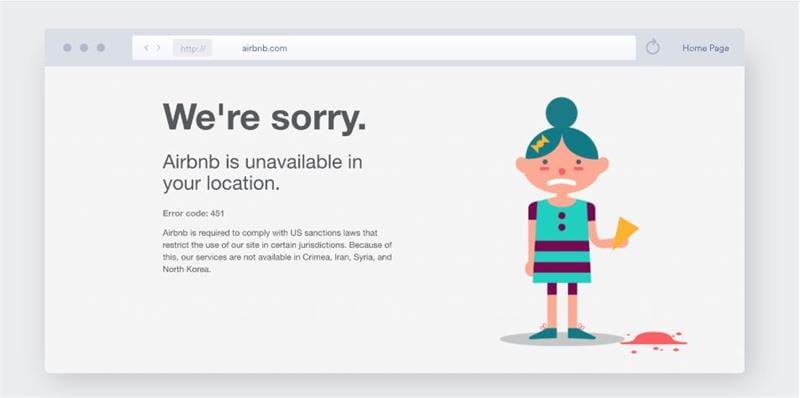
Although Airbnb has been criticized for posing a threat to the availability of low-cost lodging in metropolitan areas, it has proven to be a useful resource for travelers. However, not everyone can use it; for instance, it is unavailable in Iran due to US sanctions.
Part 2. How Does Geo-Blocking Work?
When a firm, rather than a government, is responsible for geoblocking, IP addresses are often the first line of defense. Your IP address is like a street address, revealing where you live.
IP addresses are numerical identifiers that distinguish each machine on the internet. Your computer’s IP address is sent to the server of the website you visit so that it may supply the required data.
You’ll be assigned an IP address when you sign up for an Internet Service Provider. It is possible to pinpoint the location of your device using its IP address, albeit the degree of precision may vary. Websites use the IP address to determine whether you can read their content. They will thus refuse your request if you are using an IP address that’s not on their approved list.
Part 3. Common Types of Geo-blocked Content
The difficulty stems from legal hurdles, including copyrights, licenses, and territorial disputes. Certain streaming services may not make all of their offerings accessible in all regions, or a major online shop may restrict some of their offerings to customers in just one geographic area.
Youtube
Users who upload videos can restrict access to them in certain countries. This nearly usually indicates that a business has chosen that you shouldn’t be able to see a video because of where you are located.

Spotify
You may be trying to find a method to unblock Spotify because you want to listen to unavailable music in your country or because the app has been prohibited in your area.
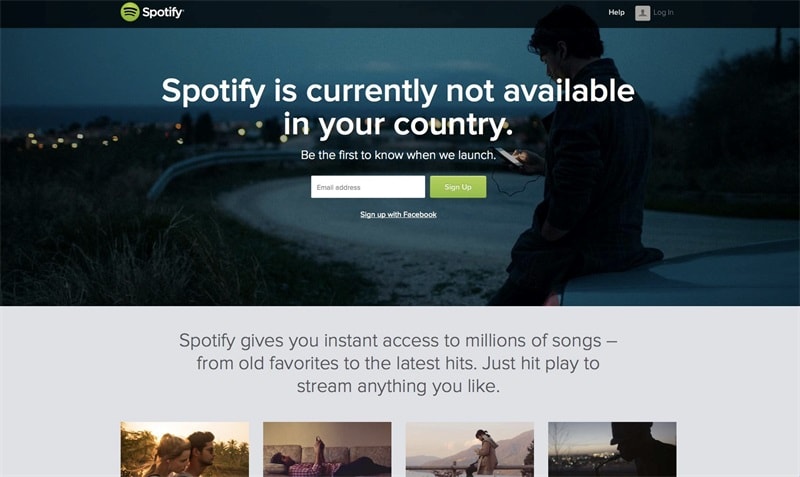
Live Sports
Big events may be aired exclusively by one company, which means you may be forced to pay to access certain material or go through annoying subscription hoops.

Pandora
Do you want to tune in to this online radio and music station? You can’t access it anywhere in Europe because of a regional firewall.

Porn sites
Artists from porn sites can now geo-block their movies, much like YouTube users do. Some porn sites have been outlawed in several countries, including Egypt and Pakistan, where the vast majority of the population resides.

Amazon
Amazon Prime geo-blocks other services as well as its streaming content. Games, ebooks, software, audiobooks, and other digital materials like TV and movies may be licensed and copyrighted. Amazon Prime prevents certain VPN IPs from accessing foreign content, including Netflix.
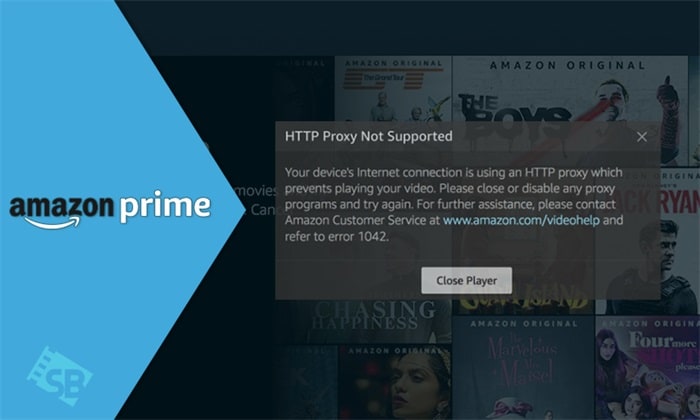
Part 4. Tips to Bypass Geo-Blocking
While certain sites may be blocked in your country, there are still methods to access the full functionality of the web. What exactly are they, and how do you go about getting them? Here’s more reading material.
Method 1. Use Smart Domain Name System (DNS)
Clever DNS can evade geoblocking if your smart TV, streaming box, or gaming console doesn’t support VPNs or proxy servers. Some home routers can generate VPN connections, but not all.
By changing your DNS address, clever DNS may alter your device’s virtual location. Smart DNS replaces your Internet provider’s DNS server. Netflix.com’s IP is not netflix.com. You’ll acquire the smart DNS provider’s transparent DNS proxy IP. Netflix thinks you’re in the US since this proxy server is.
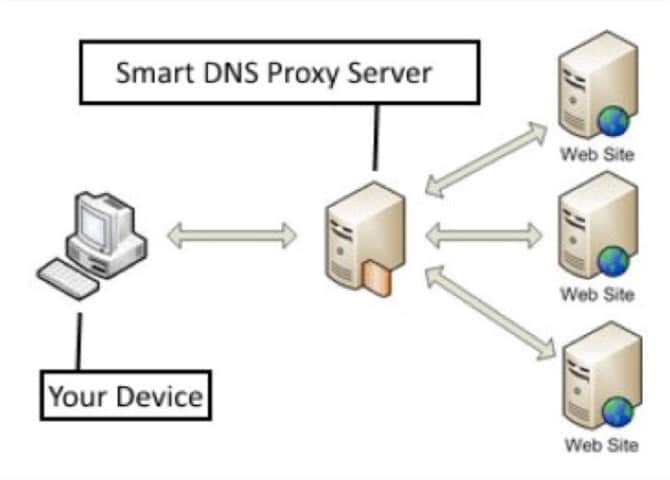
Method 2. Connect to Proxy Servers
Rather than connecting you directly to the server housing the material you want, a proxy server functions as an intermediary. A proxy server does what its name implies: it acts on your behalf to get access to the data and then forwards it to you. Proxy servers, especially those in foreign countries, may be used to get around geographical restrictions.
Depending on the kind of proxy server you use, you may or may not be able to conceal your IP address when surfing the web. Proxy servers are available online and may be accessed from any web browser. Setting up a proxy server is easy, but your activity may still be vulnerable since proxies don’t secure your data.
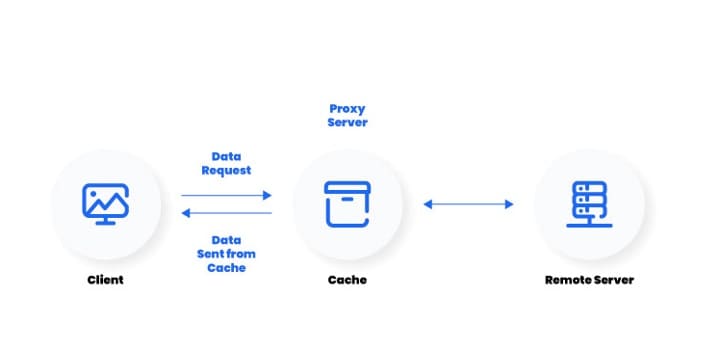
Method 3. Use the Tor Browser
In addition to using a VPN, you may use the anonymous Tor browser. The Tor browser links to the Tor network, a collection of computers that collaborate to conceal your online footprint by relaying your traffic via several intermediary nodes.
Tor employs a technique called “onion routing” to conceal its users’ identities. Since more time is required to traverse these additional levels, your internet speed may suffer as a consequence.
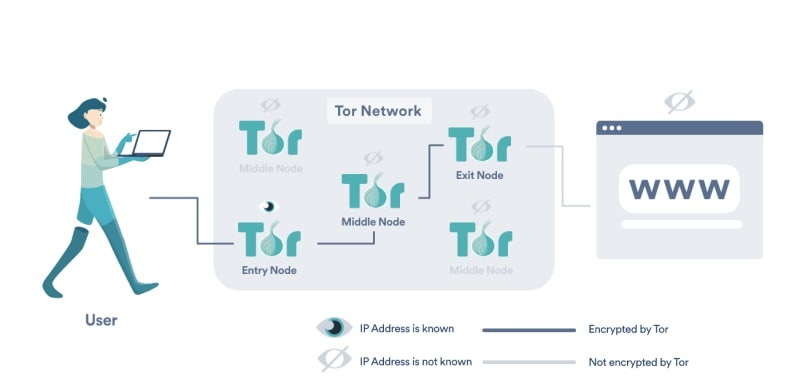
Method 4. A Good VPN Connection
A virtual private network (VPN) may hide your online identity and protect your data by encrypting your connection. VPNs allow you to get around geographically restricted material by redirecting your connection via a server in another country. This will allow you to connect to VPN servers in other countries, such as the United States, the United Kingdom, or Australia.
With effective VPN tools , you can surf the web anonymously, unblock geo-blocked content, and watch your favorite programs abroad. There are several advantages to utilizing a VPN, particularly when you travel or use public Wi-Fi, and they are simple to set up.

Part 5. FAQs About Geo-Blocking
Here are the answers to four questions that you might ask about geo-blocking.
1. Is Geo-Blocking Legal?
Yes. It’s legitimate. Limiting access to websites and services based on a user’s location is lawful. This practice is routinely used in nations like China to prevent citizens from seeing politically sensitive material. Legal arrangements, such as licensing agreements, may also be enforced by geo-blocking.
2. Is Bypassing Geo Blocking Illegal?
It depends. Depending on the situation, the nation, the purpose of the use, and the technique used, geo-blocking circumvention may be against the law. Copyright regulations prohibit users from accessing material beyond its designated location, yet many providers are reluctant to penalize users for doing so.
3. What’s the Difference Between Geo-Fencing and Geo-Blocking?
Geo-fencing is to create digital fences on which to base real-world judgments about where to go. One may draw a boundary around it using longitude and latitude lines on a map to easily establish who is permitted inside a certain region. Restricting access to material based on a user’s physical location is called “geo-blocking.”
4. Is Geo-Restricted the Same as Geo-Blocking?
They are the same. Restricting a user’s ability to access certain online resources depending on their location is known as geo-blocking or geo-restriction. To safeguard their license agreements, foreign media streaming firms often use the practice of geo-blocking.
Conclusion
For several reasons, media and content producers use geo-blocking. Although geo-blocking is unlikely to ever go out of style, there are techniques to circumvent it. Use a virtual private network (VPN) to bypass geo-restrictions on the material you want to watch. Using a Virtual Private Network (VPN), a proxy server, the Tor network, etc., your online location may be hidden or masked.
Geo-blocking controls. It’s both useful and abused. Website banning discriminates and manipulates. Geography may be annoying and frustrating. Sadly, they may always be in style. You don’t have to tolerate them!
Also read:
- [Updated] Evaluating the Monetary Aspects of Podcasting
- [Updated] Surge Your Viewer Numbers A Comprehensive Guide to YouTube Growth
- 2024 Approved Seamless, Quick Conversions Best Free Tools Transforming GIF
- AI's New Era for Website User Engagement
- Critical Considerations When Buying Your Next Fitness Wearable
- Does Airplane Mode Turn off GPS Location On Xiaomi 14 Ultra? | Dr.fone
- Fixing the Windows 1N-Update Roadblock: Solve Code 0X800F0922 Swiftly
- How to Change Netflix Location to Get More Country Version On Vivo Y55s 5G (2023) | Dr.fone
- How to Fix Life360 Shows Wrong Location On Realme Narzo 60 Pro 5G? | Dr.fone
- How to Share Location in Messenger On Honor X50i+? | Dr.fone
- How To Transfer Data From Apple iPhone 6s To Other iPhone 14 Pro Max devices? | Dr.fone
- In 2024, Easiest Guide How to Clone Itel P55+ Phone? | Dr.fone
- Spoofing Life360 How to Do it on OnePlus 12R? | Dr.fone
- Ultimate Guide: Linking Your Fire TV Stick with an External Projector
- What are Location Permissions Life360 On Realme V30T? | Dr.fone
- Will iSpoofer update On Tecno Pova 5 Pro | Dr.fone
- Title: How to Use Life360 on Windows PC For Oppo A1x 5G? | Dr.fone
- Author: Ava
- Created at : 2024-11-02 06:18:41
- Updated at : 2024-11-03 12:47:20
- Link: https://fake-location.techidaily.com/how-to-use-life360-on-windows-pc-for-oppo-a1x-5g-drfone-by-drfone-virtual-android/
- License: This work is licensed under CC BY-NC-SA 4.0.